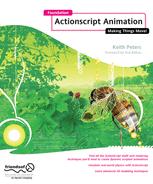

Most ebook files are in PDF format, so you can easily read them using various software such as Foxit Reader or directly on the Google Chrome browser.
Some ebook files are released by publishers in other formats such as .awz, .mobi, .epub, .fb2, etc. You may need to install specific software to read these formats on mobile/PC, such as Calibre.
Please read the tutorial at this link: https://ebookbell.com/faq
We offer FREE conversion to the popular formats you request; however, this may take some time. Therefore, right after payment, please email us, and we will try to provide the service as quickly as possible.
For some exceptional file formats or broken links (if any), please refrain from opening any disputes. Instead, email us first, and we will try to assist within a maximum of 6 hours.
EbookBell Team

4.4
72 reviewsSure you can animate using motion tweens—in fact, we'll help you do that with our Flash Cartoon Animation book—but isn't there something extra special in making things move with just a few lines of code?
In this book Keith Peters guides you through some basic animation theory and then demystifies the math and physics behind creating realistic animation, looking at trigonometry, velocity and acceleration, and bouncing & friction.
This book will teach you how to use Flash ActionScript to move the objects in your movies, rather than letting Flash's tween engine do it for you. The benefit of this is smaller, more realistic, more dynamic interactive movies that seem to come alive on your screen. Almost all of the code featured in this book will work fine in either Flash MX 2004 or Flash 8, and with a few minor adjustments, most of it can even be applied to Flash MX.
Although the text covers many advanced math and physics concepts, making for very realistic motion, there's no need to worry, even if you're a relative newcomer to programming and the last math class you took was in high school (and even if you barely remember that!).
This book first covers everything you need to know to get started: the principles of animation, and the basics of ActionScript, trigonometry, and Flash rendering methods. You'll work your way through slowly, from using code to move a single object across the screen to creating complex systems that really push Flash's capabilities, with topics covered including collision detection, particle attraction, and kinematics. The book concludes with looking at 3D animation techniques, including building a basic 3D engine, 3D lines, fills and solids, and matrix math.
Once you come to grips with the ideas presented here, you'll find yourself creating all manner of exciting animations and games!